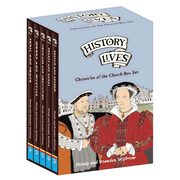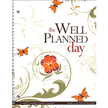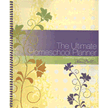The first year of Story of the World, I was teaching only a 1st grader, the next year a 2nd grader and a Kindergartner. There wasn't too much adjusting for age differences because I was primarily just teaching one child, and the others would listen along, but not really be expected to be responsible for any real content or activities. It was just fun stories. For Year 3, we had both a 3rd grader and a 1st grader and for Year 4, I was teaching all three boys - 4th grade, 2nd grade and Kindergarten. So for the last two years of SOTW I really had to deal with making adjustments for teaching multiple ages. In addition, as SOTW progresses, the work required in the activity book advances and the subject matter (20th century especially) becomes more mature - slavery, holocaust, civil rights, 9/11. In this post, I thought I would share how we negotiated those challenges in our family.
Additionally, Year 3 and Year 4 cover the time periods of the development of the American nation, but since it is a World history program, the emphasis is not on American history. I wanted to make sure that we covered more in that subject area than was offered, so I will share some supplementary materials we used to make sure the boys knew enough about our country's history.
Adjusting for Different Ages
Year 3 of the SOTW was pretty easy to adjust for differences in ages. All the boys like the coloring pages (it gives them something to do with their hands while I read aloud.) After reading the chapter section, I would do the comprehension questions orally. My 1st grader was better at remembering the details and the competition helped motivate the 3rd grader to try hard and remember the answers. I didn't ask the 1st grader to narrate, at least not every time. I did begin using the test book this year, but written responses were required only from the oldest, we used the questions in a game-show type review for the others.Year 4 required the most adjustment for the ages. Instead of narrating, the book begins to teach outlining and writing from an outline. We all worked together on completing the outline, but not even the oldest was outlining on his own by the end of the year. We worked on writing from an outline in our writing curriculum, so we didn't work on it here as well. We used the tests for both the 4th grader and 2nd grader to do comprehension reviews (much more than the previous year.) The 4th year of SOTW doesn't include coloring pages anymore, so I ordered a file of coloring pages from the publishers website. This gave us at least one picture to color for the younger kids (2nd and K), and we also used a few Dover coloring books or online resources as well.
SOTW 4 Coloring pages
Dover Coloring Books (History)
American History Coloring Pages (free)
History Coloring Pages (free)
Adding More American History
The other thing I adjusted for in Year 3 and 4 of SOTW was to add more American history either by spending more time on the stories they did cover, or by adding stories that were left out that I wanted to include. (How did I add more and still finish one book each year?) We still read all the stories in the book, did comprehension questions and map exercises. I didn't do nearly as many of the enrichment activities for these chapters. I wouldn't say we "skimmed" those chapters, but we didn't linger long on them. My pace was generally to read one chapter section each day (5 day schedule) and complete the coloring page and map activity for that chapter. At the end of the chapter, we would spend one day to review the content and any additional reading or activity we had time for. When we reached a chapter on the Jamestown colony or the Pilgrims we might spend an extra day or two on the sections - completing extra enrichment activities. We would usually find a historical literature selection to spend even more time on those areas, even after we had moved on in the history text. (Literature selections we used are at the end of this post.) Certain events were significant enough to spend two or three weeks camped out on them and completing a mini unit study.
Year 3 Mini Unit Studies
13 Colonies (2 weeks)(library books)
The Revolutionary War (4 weeks)
The American Revolution (Landmark Books) by Bruce Bliven, Jr.
The American Revolution by Alden R. Carter
Land Battles of the Revolutionary War by Diane Smolinski
History Pockets: The American Revolution (Evan-Moor Publishing)
(Toy soldiers are great for boys learning about wars - this is the Battle of Bunker Hill.)
Between year 3 and 4 we studied Colorado history by traveling to lots of historical sites for our summer camping trips and reading books on famous people from the time.
Year 4 Mini Unit Studies
Civil War (4 weeks)Field of Fury by James M. McPherson
History Pockets: The Civil War (Evan-Moor Publishing)
Westward Expansion (1 week):
Library books and History Pockets: Moving West (Evan-Moor publishing)
World War I (1 1/2 weeks):
Library books and
Truce by Jim Murphy
Coloring pages
World War II (3 weeks)
The Good Fight by Stephen E. Ambrose
Coloring pages, library videos, great grandparent interview
Several subjects didn't involve full unit studies, but we focused our project work or extra reading on those subjects: the great depression, civil rights, space race, fall of communism, 9/11 and the war on terror.
We also wanted to make sure that we memorized all the Presidents of the United States and did a quick overview of what they were known for. We put each president on our timeline, learned a song to memorize their order and watched a great series on the presidents that gave a quick but helpful overview of each president. We watched these segments as we came to their time in history. I recommend this series: Disney's The American Presidents Video series (Vol. 1-4)
Whew! That is how we worked in a little more time in American history and still maintained the context of overall world history from the Story of the World. I hope that is helpful to you if you are using SOTW and wanted to emphasize American History to a greater extent.
Now for our literature lists:
Historical Literature We Enjoyed with Vol. 3
Pocahontas by Joseph BruchacPocahontas and the Strangers by Clyde Robert Bulla
Voyage to Freedom by David Gay (About the Mayflower)
Johnny Tremain by Esther Forbes (Revolutionary War)
Kanousky, the Indian Boy and David Brainerd The Indian's Missionary (www.graceandtruthbooks.com)
Stowaway by Karen Hesse (About the travels of Captain James Cook)
Duel! Burr and Hamilton's Deadly War of Words by Dennis Fradin
Seaman by Gail Langer Karwoski (Lewis and Clark expedition)
Stolen Man: Story of the Amistad by Barry Louis Polisar
Amos Fortune by Elizabeth Yates (Slavery) Excellent!!!
Journey of Jesse Smoke by Joseph Bruchac (Trail of Tears)
The Boy in the Alamo by Margaret Cousins
The Francis Tucket series (Books 1-5) by Gary Paulsen (Oregon Trail, westward adventures)
Zeb Pike, Boy Traveler by Augusta Stevenson
Kit Carson by Ralph Moody
Historical Literature We Enjoyed with Vol. 4
(This list is my longest, it includes read alouds, independent reads for the two older boys and picture books...)Hard Gold by Avi (Colorado Gold Rush)
Little House on the Prairie series by Laura Ingalls Wilder (homesteading)
Courage to Run: A Story Based on the Life of Harriet Tubman by Wendy Lawton
The Drinking Gourd by F.N. Monjo (Underground railroad)
Henry's Freedom Box by Ellen Levine (slavery)
Ben and the Emancipation Proclamation by Patrice Sherman
Across Five Aprils by Irene Hunt
The Gettysburg Address by Abraham Lincoln (Illustrated by Michael McCurdy)
Abe Lincoln goes to Washington by Cheryl Harness
Abe Lincoln, the Boy Who Loved Books by Kay Winters
Just a Few Words, Mr. Lincoln by Jean Fritz
Iron Thunder by Avi (The Monitor and Merrimac)
The Story of the H.L. Hunley and Queenie's Coin by Fran Hawk (Civil War)
Abraham Lincoln by Ingri D'Aulaire
Escape by Night: A Civil War Adventure by Laurie Myers
John Brown: His Fight for Freedom by John Hendrix (Harper's Ferry)
The Adventures of Tom Sawyer by Mark Twain
The Journal of Sean Sullivan, a Transcontinental Railroad Worker by William Durbin
The Battle for Little Big Horn by Marty Gitlin
The Wild West by Henry Brooks
Sergeant York and the Great War by Tom Skeyhill (WWI)
War Horse by Michael Morpugo (WWI)
"In Flander's Fields" A poem by John McCray (WWI) Great for memorizing!
The Hiding Place by Corrie Ten Boom (We watched the video, also check out this great virtual tour of the Ten Boom home... http://tenboom.com/en/)
Mercedes and the Chocolate Pilot by Margo Theis Raven (Berlin airlift)
Balloon Sailors by Diane Swanson (Berlin wall)
Children of the Storm by Natasha Vins (persecution of Christians in USSR)









